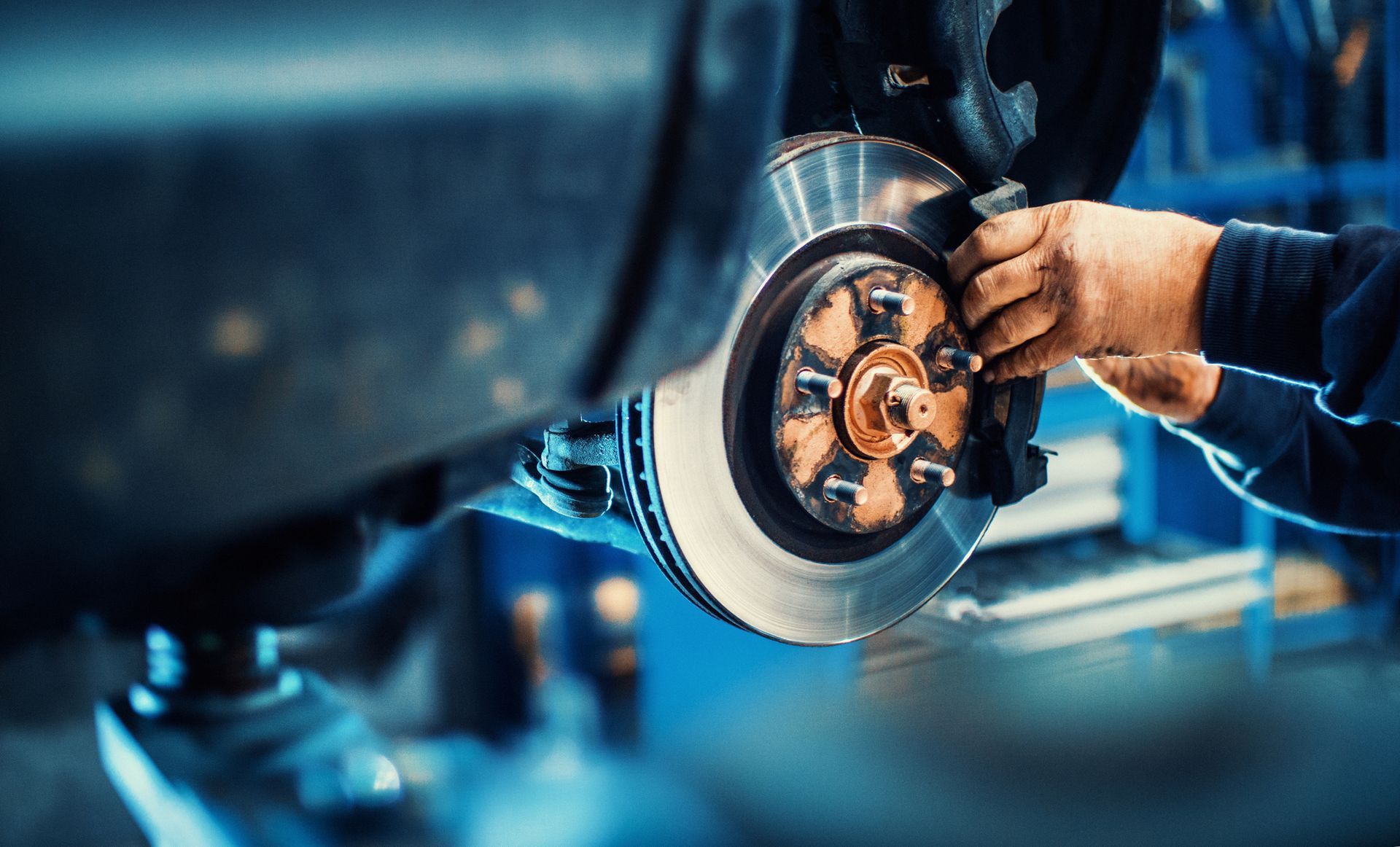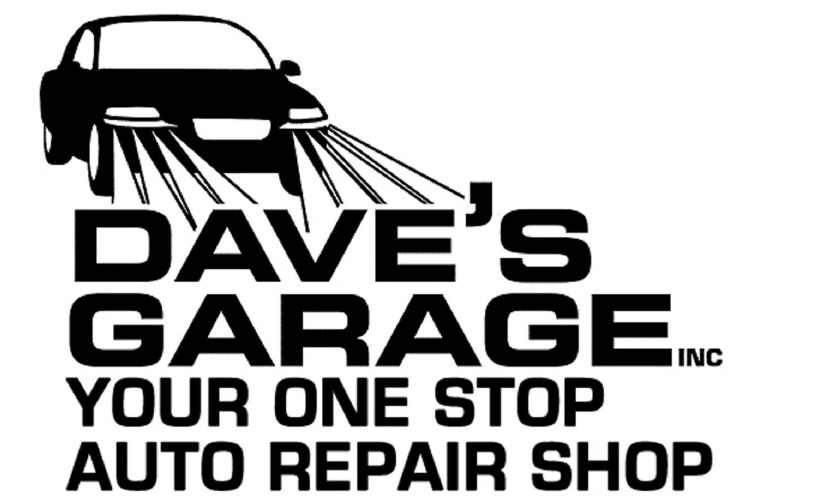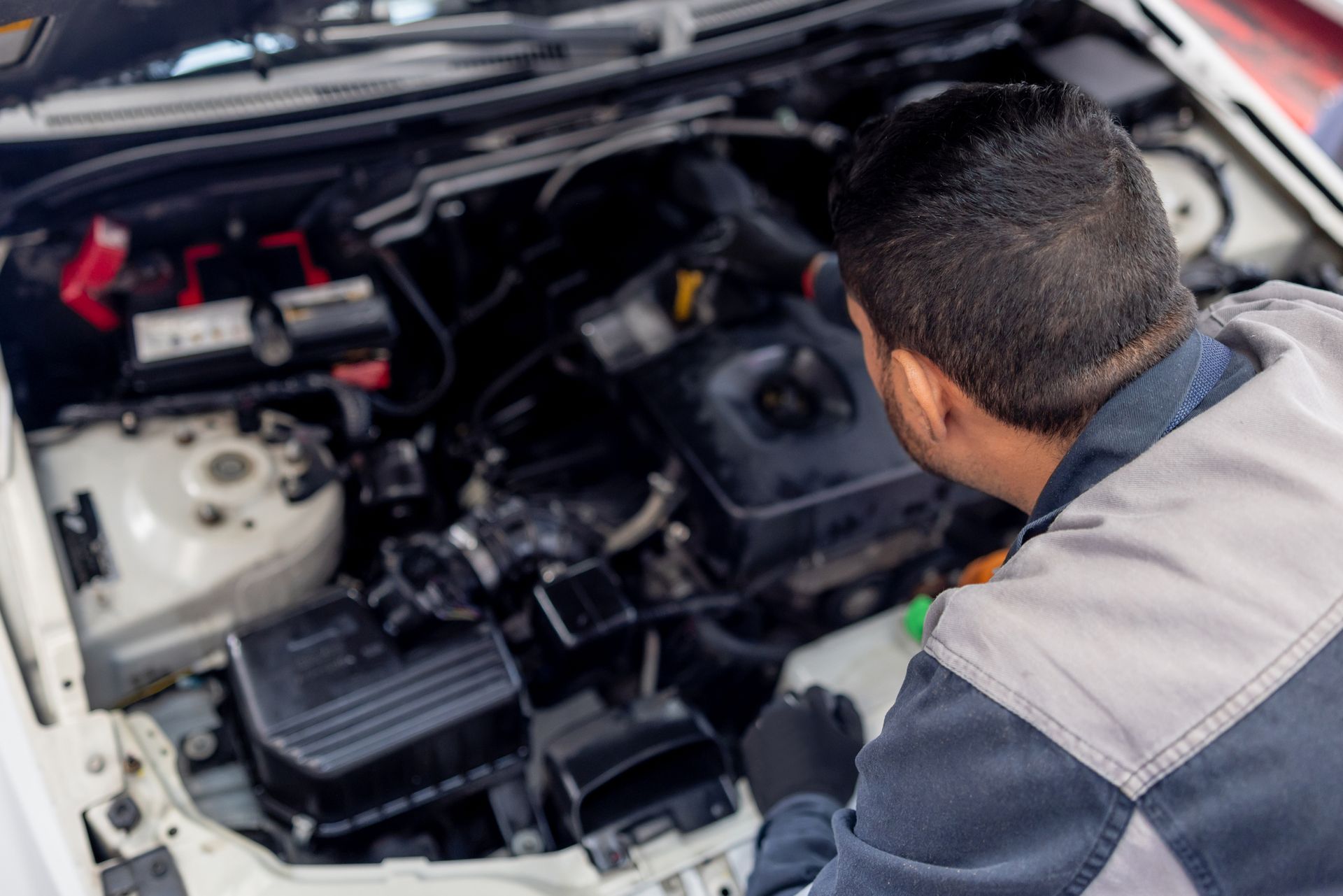Blog

Your vehicle's suspension and steering systems are critical for both comfort and control on the road. From absorbing bumps to maintaining stability in turns, these components play a fundamental role in your driving experience and safety. Let's delve into the world of automotive suspension and steering to understand how they work and why proper maintenance is essential. The Basics of Suspension Your car's suspension system consists of several components that work together to provide a smooth and stable ride: Springs: Springs absorb bumps and shocks from the road surface. Common types include coil springs and leaf springs. Shock Absorbers (Dampers): Shock absorbers control the movement of the springs, preventing the vehicle from bouncing excessively after hitting a bump. Struts: Struts combine the functions of springs and shock absorbers into a single unit and are a common feature in modern vehicle suspensions. Control Arms: Control arms connect the suspension to the vehicle's frame or body, allowing for movement while controlling the wheel's motion. Key Functions of Suspension Comfort: A well-maintained suspension system absorbs road imperfections, providing a smoother and more comfortable ride for passengers. Handling and Stability: Proper suspension geometry ensures stability during cornering, minimizing body roll and maintaining tire contact with the road. Braking Performance: A good suspension system helps distribute weight evenly, optimizing braking performance and reducing stopping distances. Signs Your Suspension Needs Attention Recognizing symptoms of suspension issues can prevent further damage and maintain road safety: Excessive Bouncing: If your vehicle bounces excessively after hitting a bump, it could indicate worn-out shocks or struts. Uneven Tire Wear: Uneven tire wear patterns can result from misaligned or worn suspension components. Pulling or Drifting: A vehicle that pulls to one side or feels unstable during turns may have worn control arm bushings or steering components. Noises: Clunking, squeaking, or knocking sounds when going over bumps can indicate loose or damaged suspension parts. Understanding Steering Systems Your car's steering system allows you to control the direction of the vehicle. Key components include: Steering Wheel: The driver uses the steering wheel to control the direction of the vehicle. Steering Column: Transmits the driver's input to the steering gear. Steering Gear: Converts the rotational motion from the steering wheel into lateral movement of the wheels. Tie Rods: Connect the steering gear to the steering knuckles, enabling the wheels to turn left or right. Importance of Steering Maintenance Proper steering maintenance ensures precise control and responsiveness while driving: Safety: A well-maintained steering system reduces the risk of accidents by allowing the driver to maneuver the vehicle safely. Alignment: Regular wheel alignment prevents premature tire wear and ensures the vehicle tracks straight. Ease of Handling: Smooth and responsive steering enhances driver comfort and reduces fatigue on long drives. Routine Suspension and Steering Maintenance To keep your suspension and steering systems in top condition: Schedule Inspections: Have a professional inspect your suspension and steering components regularly, especially if you notice any signs of wear or malfunction. Replace Worn Parts: Replace worn-out shocks, struts, control arms, tie rods, and steering components promptly to maintain vehicle safety and performance. Wheel Alignment: Check and adjust wheel alignment periodically to ensure even tire wear and stable handling. Conclusion Understanding and maintaining your vehicle's suspension and steering systems is essential for a safe, comfortable, and enjoyable driving experience. By recognizing signs of wear and scheduling regular maintenance, you can prolong the life of your car's suspension and steering components while ensuring optimal performance on the road. Remember, a smooth ride starts with a well-maintained suspension and steering system! Schedule a check-up for your vehicle today to keep it running smoothly for miles to come. Drive safe!

Your vehicle's brakes are arguably the most critical safety feature, allowing you to slow down and stop safely when needed. Over time, brake components wear down and require attention to ensure optimal performance. Let's explore why brake repair is essential and what you should know to maintain your vehicle's braking system. Signs Your Brakes Need Attention Recognizing the signs of brake wear can prevent potential accidents and costly repairs down the road. Here are common indicators that your brakes need attention: Squealing or Grinding Noise: High-pitched squealing or grinding noises when braking could indicate worn brake pads or damaged rotors. Soft or Spongy Brake Pedal: A brake pedal that feels soft or spongy when pressed may indicate air in the brake lines or worn brake pads. Vibration or Pulsation: If you feel vibrations or pulsations through the brake pedal or steering wheel when braking, it could be due to warped brake rotors. Dashboard Warning Light: An illuminated brake warning light on your dashboard signals potential issues with the braking system and requires immediate attention. Pulling to One Side: If your vehicle pulls to one side when braking, it could indicate uneven brake pad wear or a stuck caliper. Components of a Brake System Understanding the key components of your vehicle's brake system is essential for effective maintenance: Brake Pads: These friction materials press against the brake rotors to slow or stop the vehicle. Over time, brake pads wear down and require replacement. Brake Rotors: Rotors are the flat, shiny discs that the brake pads clamp onto. They can become worn or warped and may need resurfacing or replacement. Brake Calipers: Calipers house the brake pads and apply pressure to them when you press the brake pedal. Calipers can seize or develop leaks over time. Brake Fluid: Brake fluid transfers the force from the brake pedal to the brake components. Contaminated or low brake fluid can compromise braking performance. Routine Brake Maintenance To keep your brakes in top condition, follow these maintenance tips: Regular Inspections: Have your brakes inspected by a professional regularly, typically during routine oil changes. Replace Brake Pads: Replace brake pads before they wear down completely to avoid damage to other brake components. Check Brake Fluid: Ensure brake fluid is at the correct level and replace it according to the manufacturer's recommendations. Address Issues Promptly: Don't ignore signs of brake wear or malfunction. Addressing problems early can prevent more extensive repairs later. Professional Brake Repair While some basic maintenance tasks can be performed at home, such as replacing brake pads, complex brake repairs should be handled by trained technicians. Brake systems are intricate and critical to vehicle safety, so it's crucial to entrust repairs to professionals with the right expertise and tools. Conclusion Regular brake maintenance and timely repairs are essential for your safety and the longevity of your vehicle. By paying attention to signs of brake wear and scheduling routine inspections, you can ensure that your brakes perform reliably when you need them most. Remember, maintaining your brakes isn't just about vehicle upkeep—it's about protecting yourself and others on the road. Schedule a brake inspection today if you notice any signs of brake wear or deterioration. Your safety is worth it!

Driving during the hot summer months can be a sweaty and uncomfortable experience without a properly functioning air conditioning system in your vehicle. Automotive air conditioning not only keeps you cool and comfortable but also plays a crucial role in maintaining driver alertness and overall driving safety. Let's delve into the essentials of automotive air conditioning to understand how it works and how to keep it in optimal condition. How Automotive Air Conditioning Works Automotive air conditioning operates on the principles of refrigeration, involving a cycle of compression, condensation, expansion, and evaporation of a refrigerant gas. Here's a simplified breakdown: Compressor: This component pressurizes the refrigerant gas, increasing its temperature. Condenser: The hot, pressurized gas flows through the condenser, where it releases heat and transforms into a liquid state. Expansion Valve: The liquid refrigerant passes through an expansion valve, reducing its pressure and temperature. Evaporator: As the low-pressure liquid refrigerant enters the evaporator, it evaporates, absorbing heat from the surrounding air inside the car. Blower: A fan blows air over the evaporator, cooling it down before distributing it throughout the vehicle's cabin. Common Issues and Maintenance Tips Like any automotive system, air conditioning requires regular maintenance to function efficiently. Here are some common issues and tips to keep your AC running smoothly: Refrigerant Leaks: Low refrigerant levels are often due to leaks. Have your system checked for leaks and recharged if needed. Clogged Condenser: Dirt and debris can accumulate on the condenser, hindering heat dissipation. Regularly clean the condenser to ensure optimal airflow. Faulty Compressor: A malfunctioning compressor can lead to insufficient cooling. Address unusual noises or reduced cooling promptly. Cabin Air Filter: A dirty cabin air filter restricts airflow, reducing cooling efficiency. Replace the filter as recommended by the vehicle manufacturer. Strange Odors: Foul odors from the AC vents may indicate mold or bacteria growth. Consider having the system cleaned and sanitized. Tips for Maximizing Efficiency To get the most out of your automotive air conditioning system, follow these tips: Regular Use: Use your AC regularly, even in cooler weather, to keep seals lubricated and prevent components from drying out. Shade Parking: Park in shaded areas whenever possible to reduce the initial load on your AC system. Pre-Cooling: Start cooling your car before driving off by rolling down the windows or using the air recirculation feature to expel hot air. Maintenance Schedule: Follow the manufacturer's recommended maintenance schedule for your AC system to ensure optimal performance and longevity. Conclusion Automotive air conditioning is not just a luxury; it's a vital component that contributes to driving comfort and safety, especially during hot weather. By understanding how your AC works and implementing proper maintenance practices, you can enjoy a cool and pleasant driving experience all year round. Remember, a well-maintained AC system not only keeps you comfortable but also contributes to the overall health and performance of your vehicle.

![A person looking at the hood of a car | Auto Repair in Greenfield Wi | Dave's Garage Inc ]](https://lirp.cdn-website.com/c61a0dbb70d3420381782d480c5d96b6/dms3rep/multi/opt/ThinkstockPhotos-160940407-1920w.JPG)
